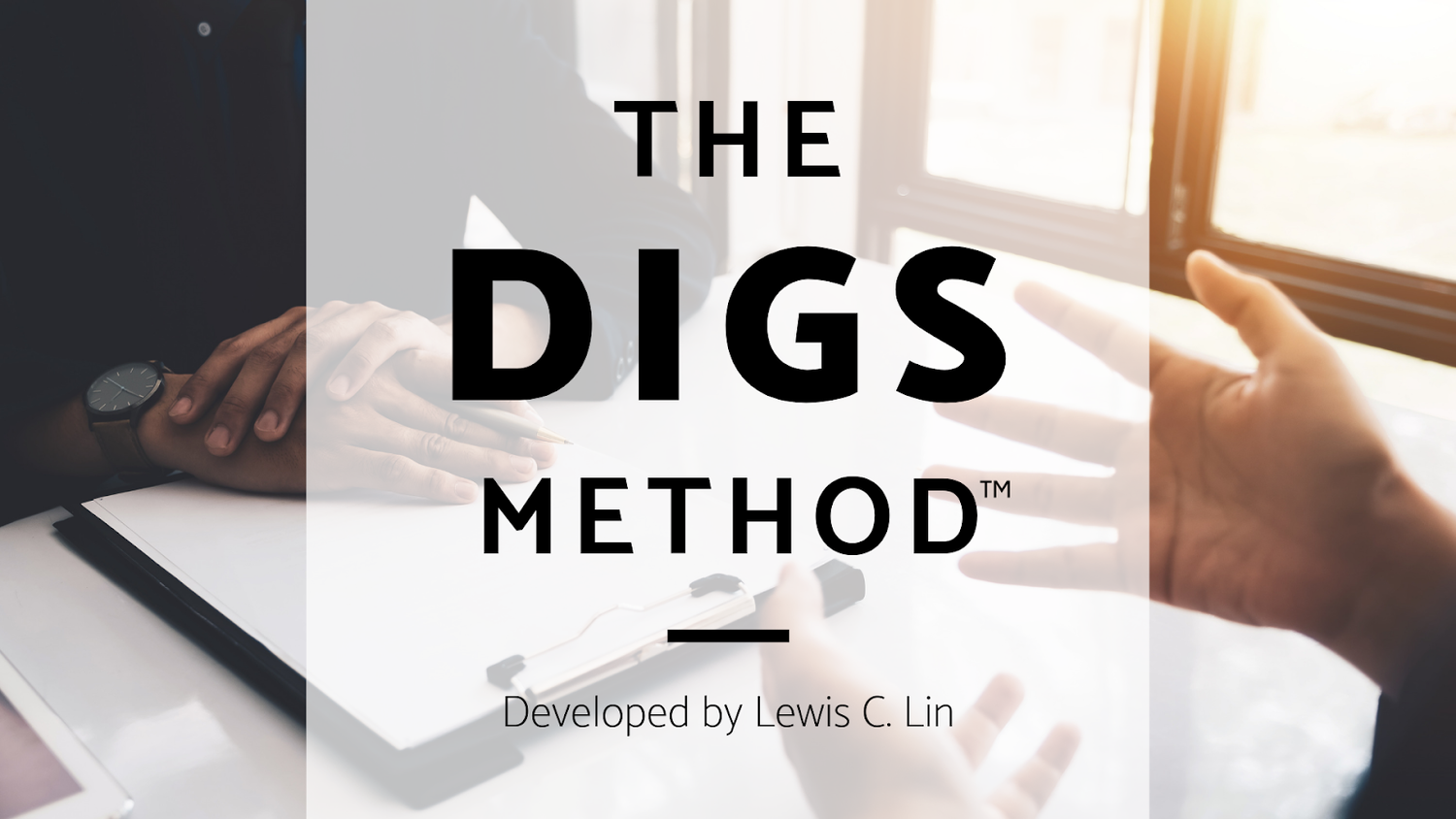# What is the DIGS Method™?

## Metadata
- Author: [[Lewis Lin]]
- Full Title: What is the DIGS Method™?
- Category: #articles
- Summary: The DIGS Method™ is a framework for answering behavioral interview questions more engagingly than the traditional STAR method. It involves dramatizing the situation, indicating alternatives, describing actions taken, and summarizing the impact. Emphasizing storytelling and showcasing problem-solving skills are key components of using the DIGS Method™ effectively in interviews.
- URL: https://www.lewis-lin.com/blog/2019/9/16/what-is-the-digs-method
## Highlights
- The DIGS Method™ is Lewis’ framework for tackling [behavioral interview questions](https://www.impactinterview.com/2018/06/traditional-vs-behavioral-interviews-definitions-and-examples/). It’s superior to [STAR](https://en.wikipedia.org/wiki/Situation,_task,_action,_result) because most candidates mechanically apply STAR, sucking away appeal. The typical STAR answer sounds like this:
> So the **situation** was that I had to analyze a business challenge…
>
> My **tasks** included delivering a 10-page written report and an executive presentation…
>
> The **actions** I took included doing research, formulating my thoughts, and writing the first draft…
>
> The **result** was that I completed the report and everyone liked it.
So dull. So boring. ([View Highlight](https://read.readwise.io/read/01hzx8x9k94wte41zb9nxpzz05))
- The DIGS Method™ stands for:
• **D**ramatize the situation
• **I**ndicate the alternatives
• **G**o through what you did
• **S**ummarize your impact ([View Highlight](https://read.readwise.io/read/01hzx8xwdck9qthjbmpnmvqvtc))
- Details and context are imperative when crafting a narrative about why your job, project, or product matters. Differentiate yourself by emphasizing the issues that were conducive in reaching goals and problem-solving. ([View Highlight](https://read.readwise.io/read/01j01x25er7vrwxf439r4nsdrt))
- The interviewer needs to understand why the choices you made were best in respect to the alternative solutions. Describing other possible solutions can help you and your final solution stand out; not doing so makes your choice seem expected and ordinary. ([View Highlight](https://read.readwise.io/read/01j01x2ggbjvtby4zen6v3gggx))
- Describe what you did. The interviewer should get a front-row seat to the (not-so-instant) replay. What happened first? Who did you call? How did they respond? Did you get any resistance? This helps the listener get an idea of how involved you were and the ways you in which you influenced the situation. ([View Highlight](https://read.readwise.io/read/01j01x3thes87fmmwqjchq3ay7))
- The best stories often conclude by recapping the main actions and their impact on the overall situation. Tell your listener how you made a lasting difference. Did your actions benefit the business as a whole? Can you provide concrete details such as numbers and percentages to support the account? Is there a qualitative statement from an executive or a customer who thought you excelled? These are the types of specifics that reinforce your decision-making skills. ([View Highlight](https://read.readwise.io/read/01j01x4y1qy52e4ys1dked69t8))